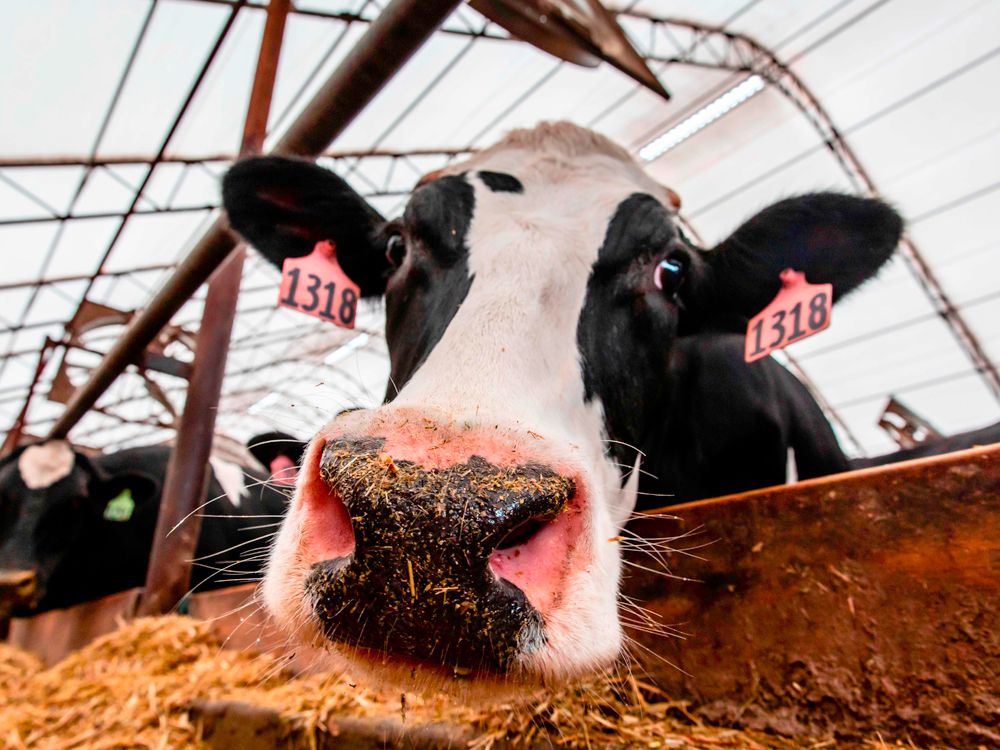
As the formal trade agreement dispute filed by the Office of the US Trade Representative in May ramps up, many American dairy farmers and processors may be left wondering – is Canada really limiting US dairy sales?

That’s the question a Hoard’s Dairyman webinar panel pondered June 30, which included guests Mark Stephenson, director of the Center for Dairy Profitability at University of Wisconsin-Madison; Gregg Doud, who previously served as chief agricultural negotiator in the USTR office; and Al Mussell, research lead at Agri-Food Economic Systems in Canada. Corey Geiger moderated the panel.
A heated topic on both sides of the issue, US Trade Representative Katherine Tai filed a dispute with Canada over their allocation of dairy tariff-rate quotas (TRQs) exclusively to Canadian importers. Tai claimed that keeping TRQs mostly limited to Canadian entities who may not use them denies American exporters the ability to get into Canadian markets.
Stephenson said Canada decided not to provide access to their dairy markets due to a constrained quota system, though other commodity markets like lumber are not constrained like dairy. The argument, he said, is that Canada would be better off providing American producers access to those markets and freeing up trade as USTR believes it agreed to when ratifying the US-Mexico-Canada Agreement in 2020.
The USCMA, which took affect July 1 last year, is also the first free-trade agreement with Canada that the US has had on the books that includes dairy because the North American Free Trade Agreement did not address it. The lack of access to Canadian markets, Stephenson said, has frustrated dairy farmers and processors because of a surplus in milk powders and some butter fats, forcing them to find newer markets in Asia and elsewhere to get rid of the extra product.

“The issues are not straightforward,” Stephenson said. “Canada doesn’t want to provide access to dairy markets because that threatens their food system, but their lumber industry wants to sell plywood to the US. It might be acceptable in the greater good to have the US give up some of the potential for our lumber prices … and Canada maybe better off in full by accepting some dairy products from the US.”
Due to skyrocketing demand for dairy products, Doud said Canada, which imports significantly more dairy products than the US, has struggled with their own supply management. He explained that we won’t be able to see the effects of USMCA and whether or not we “got it right” in the trade negotiations until about 10 years from it taking affect – that will be in 2030.
Doud added that a proper dispute mechanism should have been built into USMCA’s language, causing some confusion among those in the dairy industry about what the dispute motion means and what effects it may have. Tai has since established a dispute settlement panel that will review the case.

“Let’s try to create a mechanism, when we have a situation where we have a disagreement, that we can work this out in short order,” Doud said. “We all understand the importance of getting this relationship right between the US and Canada and dairy. But to me, almost more important is whether this dispute mechanism is going to work. This is going to be an interesting and important test … from the US perspective because in the 21st century, we would call (USMCA) a gold standard agreement.”
Mussell, a Canadian citizen, said it’s unfortunate that this has been escalated to a dispute. He added that many of the TRQ numbers and nuances have been confused because the USMCA came into effect towards the end of the Canadian fiscal dairy year, which runs from Aug. 1 to July 31, causing the year’s quotas to be prorated for 2020 in preparation for USMCA. The pandemic’s market disruptions also played a role in delayed establishment of agreements with TRQs, he said.
Canada will continue to have an increased interest in exports, Mussell said, adding that the country is “committed” to increasing market access for the US and other countries, but they’re also keeping a delicate balance of supply and demand. He also said that Canada will continue to uphold the Comprehensive and Progressive Agreement for Trans-Pacific Partnership (CPTPP), which connects Canadian trade to Australia, Brunei, Chile, Japan, Malaysia, Mexico, New Zealand, Peru, Singapore and Vietnam.

“Canada’s milk marketing system, which has quite a number of distinct similarities to US milk marketing, is predicated on supplying the domestic demand. While it is painful, Canada has committed to increase access to dairy imports from the US, European Union and the CPTPP countries,” Mussell said. “From my perspective as an agricultural researcher, I see nothing in this agreement that’s adverse to Canada’s current dairy import practices.”























